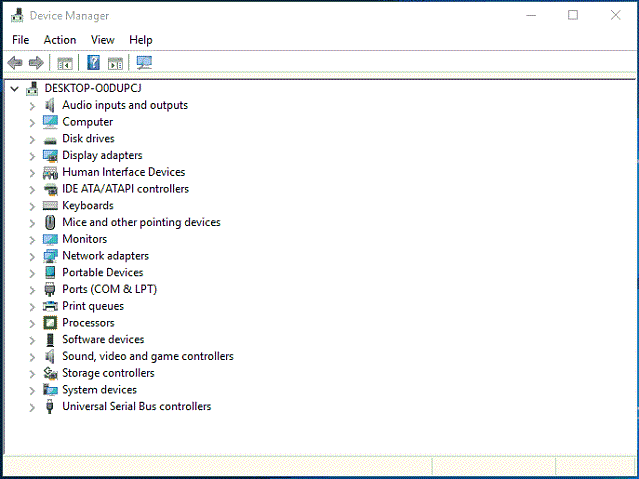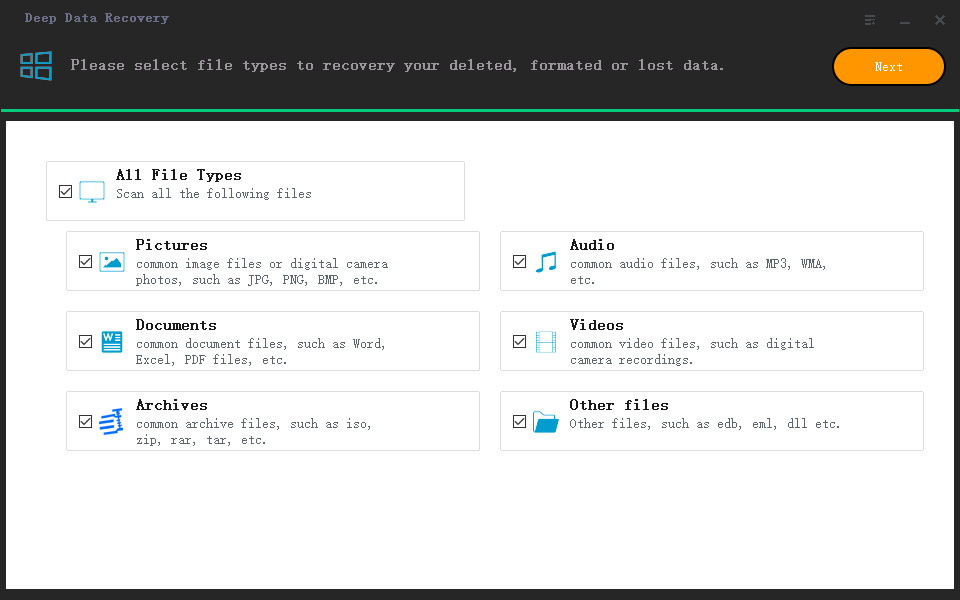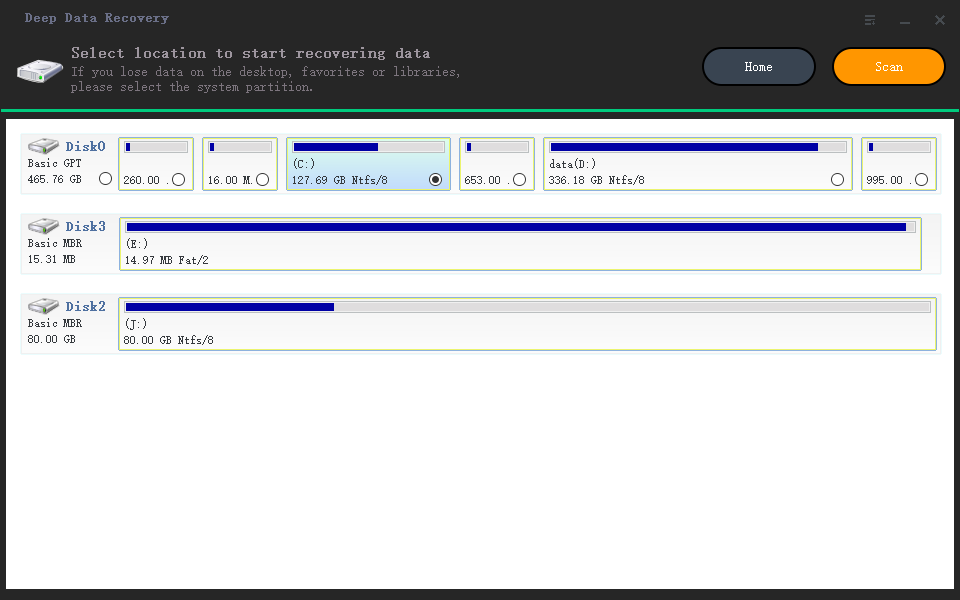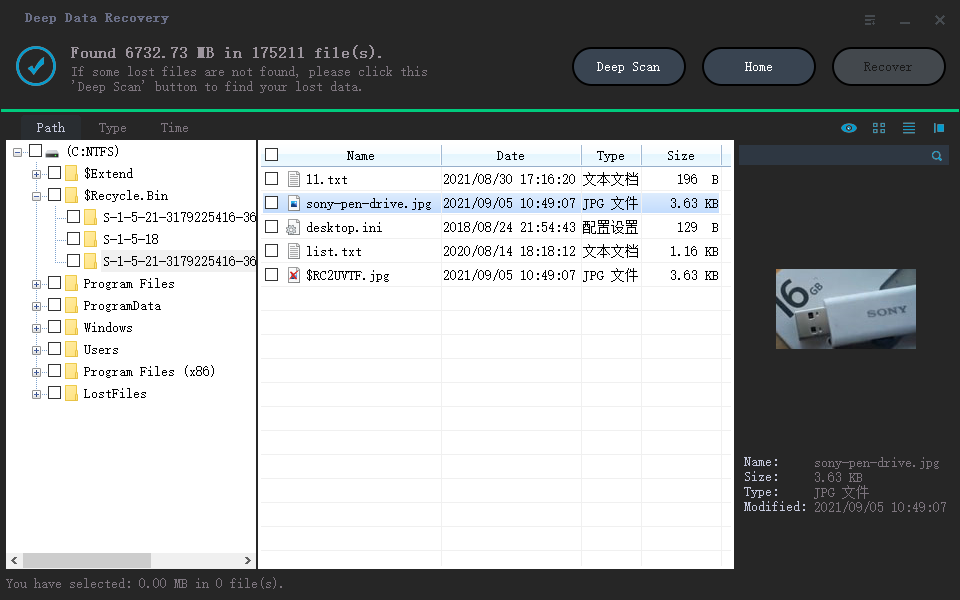How to Fix Second Hard Drive Not Showing Up (Updated)
Secondary hard drives are an excellent way for you to extend the storage capacity of your PC without having to replace your primary hard drive. When a computer doesn't recognize a secondary hard drive or the second hard drive is not showing up correctly, you must identify the root of the problem and find corresponding solutions.
4 Ways to Fix Second Hard Drive Not Showing Up in Windows 10/8/7
There are four types of second hard drive not showing up issues in Windows 10, 8.1, 8, and 7. Examine your case and pick up one solution that works best for you.
| Workable Solutions | Step-by-step Troubleshooting |
|---|---|
| Second HDD Not in This PC | Launch Qiling Partition Master. On the main window, right-click on the unallocated space...Full steps |
| HDD Not in Disk Management | Select the "Start" button, type Device Manager, and select it from the list of results...Full steps |
| Second HDD Not in Device Manager | Navigate to "Control Panel" and click on "Troubleshooting". On the right pane, find "Hardware and Sound"...Full steps |
| Second HDD Not in BIOS | Restart PC. Hold and press "F2" to enter the BIOS environment. In the Setup section...Full steps |
If you run into one of these troubles, you are in the right place! On this page. we present troubleshooting steps in detail to help address each issue perfectly, by which you'll be able to make use of your second or even third HDD or SSD without the recognition problem.
Fix 1. Second Hard Drive Not Showing Up in This PC or My Computer
According to the received feedback, over half of users didn't see their external hard drive appearing in the place where it should be, i.e This PC in Windows 10 and 8, My Computer in Windows 7. You can check it in the Disk Management, which is probably shown as a disk 1 or disk 2 with "Unallocated". Or do it in an easier way.
Tip: If your second hard drive is a brand new one, you need to initial it. An uninitialized hard drive will be recognized as unallocated space, and you cannot see it on This PC. So, if the second hard drive is a new one, initialize the HDD or SSD.
Download a third-party free partition manager called Qiling Partition Master. It can quickly troubleshoot the problem by assigning a drive letter.
Step 1. Launch Qiling Partition Master. On the main window, click on the unallocated space on your hard drive or external storage device and select "Create".
Step 2. Adjust the partition size, file system (Choose the file system based on your need), label, etc. for the new partition and click "Proceed" to continue.
Watch the following video tutotial and learn how to create a partition in NTFS, FAT, or EXT file system.
Close the program when the job is done. Now return to This PC or My Computer, your hard drive should be detected by Windows and correctly displayed with the drive letter you've just created!
Fix 2. Second Hard Drive Not Showing Up in Disk Management
You should move further to the Device Manager and it's time to update hard drive drivers.
Step 1. Select the "Start" button, type Device Manager, and select it from the list of results.
Step 2. Expand one of the categories to find the name of your device, then right-click (or tap and hold) it, and select "Update Driver".
Step 3. Select "Search automatically for updated driver software".
- If Windows doesn't find a new driver, you can try to look for one on the device manufacturer's website and follow their instructions.
- Otherwise, try reinstalling the driver by doing this. Open "Device Manager", right-click the name of the device, and select "Uninstall". Restart your PC and Windows will attempt to reinstall the driver.

Notice: If you cannot find a wanted device driver, you can also download the correct driver on the official website of the corresponding hard disk manufacturer. Then, try again to see whether the hard drive is showing up or not after installing the driver.
Fix 3. The Second HDD not Showing Up in Device Manager
That's a little troublesome when your hard drive is not even detected in Windows Device Manager, and you should pray for a little while because your drive is probably corrupted and develops bad sectors. In this case, you can either use the aforementioned Qiling Partition Master to repair hard disk bad sectors or run Windows Hardware and Devices Troubleshooter.
Step 1. Navigate to "Control Panel" and click on "Troubleshooting".
Step 2. On the right pane, find "Hardware and Sound", under which select "Configure a device".
Step 3. Run as administrator is asked. Click "Next" to run Troubleshooter.
Step 4. If any issues are found you will be prompted to confirm "Apply this fix". This may occur numerous times depending on the errors found.
Fix 4. Second Hard Drive Not Showing Up in BIOS
Have you prepared for the worst situation that this second hard drive shows up nowhere, including all the paths you can think of and even in BIOS? This problem should be tricky. You will need to ask a professional to help. As far as we concerned, your hard drive not showing up in BIOS is mainly caused because the drive is not enabled in the BIOS or it's just a faulty hard drive.
To enable the hard drive in BIOS and make the second hard drive show up in Windows 10 correctly, do as follows.
Step 1. Restart PC. Hold and press "F2" to enter the BIOS environment.
Step 2. In the Setup section, check whether the second hard drive is turned off in the system setup. If yes, turn it on.
Step 3. Reboot PC again. See if the second hard drive showing up normally this time.
To make sure the connection is normal.
- Check whether the hard disk is connected correctly.
- Check whether the hard disk indicator is flashing normally.
Bonus Tip - Recover Data from Damaged Windows Hard Drive
After you have fixed the 2nd hard drive not showing up, you may encounter another problem. Your data on the second hard drive is missing. There's no need to be panic. You can recover permanently deleted files with Qiling data recovery software. This cross-platform data recovery software has all the features you could dream of.
Download Deep Data Recovery and recover hard drive data:
- Recover deleted, formatted, and inaccessible data in different data loss situations.
- Recover photos, audio, music, and emails from any storage effectively, safely, and completely.
- Recover data from the recycle bin, hard drive, memory card, flash drive, digital camera, and camcorder.
Step 1. Select the file types and click "Next".

Step 2. Select the drive where you lose your data and click "Scan".

Step 3. Use "Filter" or "Search" to find the lost files when the scan completes.

Step 4. Select all the files you want and click "Recover". Then, browse another secure location to save them.
Conclusion
So many effective methods can help you with the second hard drive not showing up problems. It is not challenging to deal with the second hard drive not detected in Windows 10/8/8.1/7 issue. More importantly, Qiling Partition Master can also help solve other similar disk issues like BIOS detect the hard drive but Windows does not, USB flash drive showing 0 bytes or no media, HDD formatting takes forever, etc.
Second Hard Drive Not Showing Up FAQs
Issues with unrecognized secondary hard drives are very common, and that's what we have been covering in the article above. If you still have a second drive not showing up problems, you can read the following frequently asked questions.
Why should I use a secondary hard drive?
The main advantage of secondary hard drives is that while one that is faster, such as an SSD, can be used for computing purposes - games, resource-intensive apps, etc. the slow ones can be used purely for storing personal data.
Why is my second hard drive not showing?
Many reasons can lead to a missing hard drive.
- Uninitialized drive
- unallocated space
- Out-of-date device driver
- Connection problems and more
How many hard drives can I have connected to my PC at a time?
Each hard drive requires one drive letter per partition, and there are 24 drive letters. Thus, you can have up to 24 hard drives.
Related Articles
- How to Increase/Extend C Drive Space in Windows 11(Fixed)
- Can't Skip Disk Check on Startup Windows 11 | What Should I Do?
- How to Convert Basic Disk to Dynamic Disk in Windows Server 2012/2016/2008
- [2022 Tips] How to Remove Ubuntu from Dual Boot